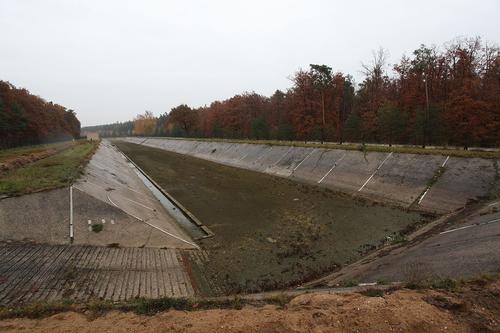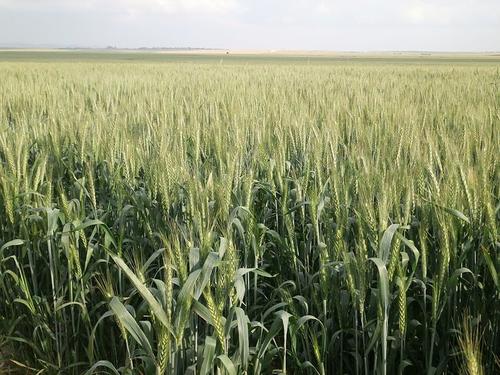Land based treatment
Land based treatment is the controlled application of wastewater to the soil where physical, chemical, and biological processes treat the wastewater as it passes across or through the soil. The treatment of wastewater relies on the action of soil bacteria to degrade the organic wastes in the wastewater. In what is termed 'Soil Aquifer Treatment' wastewater is applied to unlined basins in cycles of flooding and drying. The cycle time deepens on the permeability of the soil. During flooding wastewater percolates through the soil beneath the basin to the unconfined groundwater aquifer. During drying the layer of solids accumulating at the bottom of the basin are degraded by bacteria and also undergo drying. The percolation capacity for wastewater is therefore rejuvenated. Vegetation is usually part of the treatment process. It takes up nutrients (nitrogen and phosphorus) released from the degradation of the organic substances. The vegetation usually is grass, which is harvested by grazing animals but also crops and forests can be used. Land application for treatment of wastewater when combined with vegetation can be considered as treatment and reuse of wastewater. Depending on the use of the crop, pretreatment steps should be applied. The principal types of land treatment are slow rate, overland flow, and rapid infiltration.
(UNEP 2000 & EPA 2004)
-
Slow rate infiltration
In the case of slow rate infiltration, the wastewater is applied to the land and moves through the soil where the natural filtering action of the soil along with microbial activity and plant uptake removes most contaminants. Part of the water evaporates or is used by plants. The remainder is either collected via drains or wells for surface discharge or allowed to percolate into the groundwater. (EPA 2004)
-
Overland flow infiltration
This method has been used successfully by the food processing industries. The wastewater is allowed to flow down a gently sloped surface that is planted with vegetation to control runoff and erosion. Heavy clay soils are well suited to the overland flow process. Water that is not absorbed or evaporated is recovered at the bottom of the slope for discharge or reuse. (EPA 2004)
-
Rapid rate infiltration
The rapid infiltration process is most frequently used to polish and recover wastewater effluents for reuse after pretreatment processes. It works well when the soil permeability is high (> 1 m/day), and the highest groundwater table is at least 2 m below the bottom of the basin. Furthermore, if the soil beneath the basin contains clay minerals, pollutants like heavy metals may be adsorbed by the clay minerals. (UNEP 2000 & EPA 2004)

